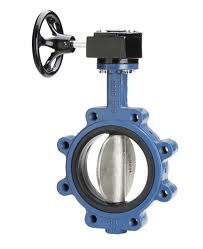The most commonly used metal alloys in Butterfly Valve manufacturing
November 20, 2013 |
 There are a whole swath of materials that can be used when designing a butterfly valve. In many cases, you’ll find several different materials within the same design in order to achieve the best possible combination of functionality and cost. This month’s post talks a little bit about some of the more common materials used in butterfly valve designs and some of the advantages and disadvantages of using them.
There are a whole swath of materials that can be used when designing a butterfly valve. In many cases, you’ll find several different materials within the same design in order to achieve the best possible combination of functionality and cost. This month’s post talks a little bit about some of the more common materials used in butterfly valve designs and some of the advantages and disadvantages of using them.
Carbon Steel
Carbon steel is an alloy of iron whose main alloying element is carbon. For the most part, no other alloying elements are added to control the various properties in the material and it’s frequently used to form the body and disc of the valve using a sand casting process.
Their main advantage is the cost. For one, carbon steels are cheap, so they provide a fantastic solution where safety is only a tertiary concern and cost is everything. The flip side of that is that they’re highly susceptible to corrosion. You can use surface protection to overcome those issues to an extent, but it’s always important to remember that while it’s a reliable product – you will always get what you pay for.
Stainless Steel
Stainless steel as an iron alloy has a minimum chromium ointment of 10.5% that acts as a self-healer on the surface of the material. That means that in the event that something gets scratched or damaged, the chromium reacts quickly to prevent oxygen from interacting with the iron and forming rust. This alloy has gained popularity over the years and today is one of the most popular materials used to create Butterfly Valves on the market.
Nickel Alloys
Wherever there are extreme service conditions, you’ll see nickel alloys deployed in some shape or form. They’re incredibly efficient and resilient in harsh corrosive environments that attack stainless steel by eating away at their protective oxide layers. Thanks to their extreme durability, they’re the most common material used in valve construction.
They do come with a downside, though – they cost a lot and weigh a ton. Nickel is an extremely dense material and the cost can surpass basic stainless steel many times over.
Titanium alloy
Titanium has the highest strength-to-weight ratio of any metal used in Butterfly Valve creation. Titanium alloys are extraordinarily resistant to corrosion due large in part to the protective oxide layer on its surface. They’re particularly effective at outlasting seawater.
While Titanium is a wonderful alloy, it’s incredibly expensive – costing as much as ten times as much as your basic stainless steel or nickel aluminum bronze alloys. It can also be challenging to produce, as it’s a very reactive surface. In fact, owners usually have to deploy special casting techniques to prevent reaction during the melting and pouring of Titanium.
Nickel Aluminum Bronze
Nickel Aluminum bronze is made up of three different copper based alloys: 10% aluminum, 5% nickel and 5% iron. It’s highly resistant to corrosion and much like Titanium, is particularly resistant in salt-water environments. They’re also great and taking on bio-film that can cause a whole host of corrosion problems on other alloys like Stainless steel.
The upside to the material is that it isn’t much more expensive than your run-of-the—mill stainless steel alloys. The major downside? The material is more anodic than most materials – which basically means it doesn’t work well with other types of metals, particularly stainless steel. It’s great as a stand-alone alloy; just don’t expect results when combining it with other metals.
